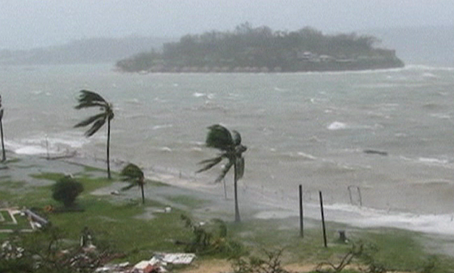Facts about Cyclone Pam
Cyclone Pam was one of the most devastating cyclones to hit Republic of Vanuatu ever. It has caused large-scale destruction and major infrastructural damage to most of the buildings in the country. Vanuatu which is an island nation is basically volcanic in origin. Experts around the world are blaming the drastic change in climatic conditions which have triggered the monstrous cyclone. Human casualties are reportedly less as against the extent of damage. All national emergency centres were activated as all communication centres have been damaged, power and water supply crippled thus actually cutting of 60 islands from the world outside. An approximate number of 1, 32,000 people have been displaced out of which 54,000 are children as per UNICEF. The cyclone has been declared as a natural disaster as it the third most severe storm after Zoe and Gafilo to hit Southern hemisphere. In addition to Vanuatu, cyclone has also damaged New Caledonia and the Solomon Islands.
The government in Vanuatu which came to power 2 years ago, had made massive investments to equip the country with world-class infrastructure like public buildings, hospitals, schools, airports, roads etc. which has been reduced to rubble in no time. The fears of epidemics and shortage of food and medical supplies is also gripping the nation. The President Baldwin Lonsdale, while on a visit to World Conference of Disaster Risk Reduction has appealed to the world leaders to come together to provide immediate help to enable the government to rebuild what has been lost. The international community has come forward with generous donations to help the nation rebuild itself. The President has blamed the rapid climate change as the factor behind the damage as he reiterated that Pacific island nations have been on the frontline of the impacts of climate change brought about by misdeeds of the developed world. Economically it falls in the category of least developed nations in the world as per UN. Agriculture is the major contributor towards GDP. Australia is the biggest donor whose share in aid amounts to 60% of the total.


